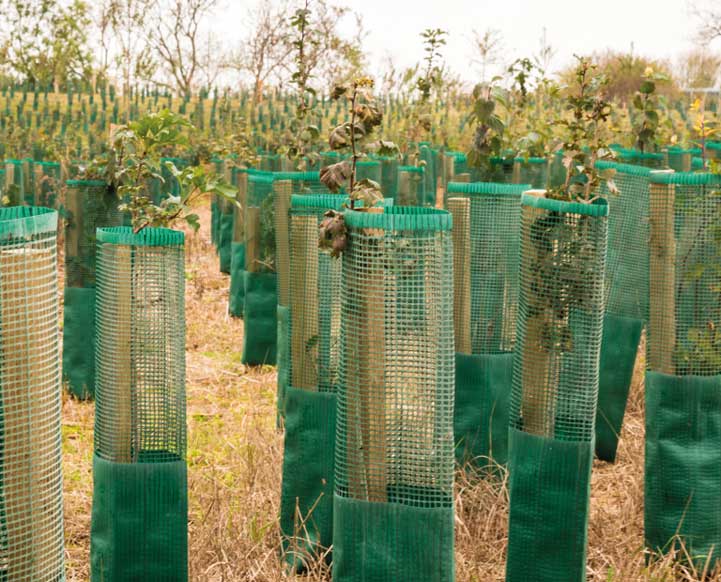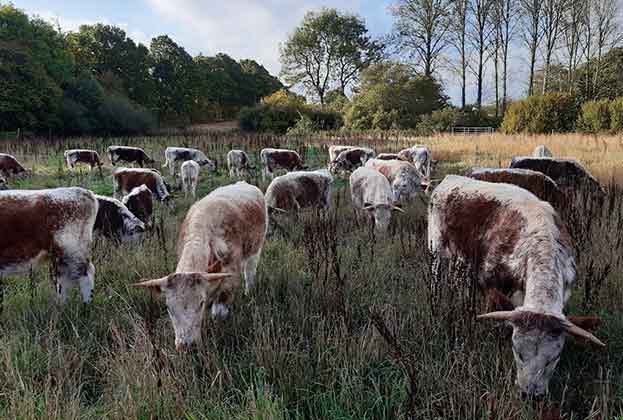A slower transition with regenerative agricultural practices adopted incrementally allows farmers greater flexibility while they learn what best suits their farm
Regenerative agriculture involves lower cost practices such as no-till drilling and introduces new costs such as cover crops. In the early years of adoption, as farmers are learning what suits their farm and before soil health starts to improve, there is a risk that a farm’s overall performance could be lower if yields are affected. A slower transition with regenerative agricultural practices adopted incrementally may be less risky, but would also delay the rate at which environmental benefits are realised. There are some parallels between this transition and the two-year organic conversion process that is supported via Countryside Stewardship options. However, the lack of an official certification means that the adoption of regenerative agriculture is unlikely to be supported in this way.
There may, however, be opportunities to use mainstream Countryside Stewardship options in England to help kickstart the process of soil recovery, providing both financial support for the land to be under a fodder crop, sown fallow or legume-rich sward for longer than would ordinarily be possible in an arable rotation.
One of the principles of regenerative agriculture is minimising soil disturbance, and the adoption of no-till drilling is often the end goal. But the journey to that goal may involve cultivations getting progressively shallower as soil health improves, meaning that the right drill at the start of the journey may not be the most suitable drill at the end of the journey. Top specification no-till drills can cost up to double the price of an equivalent width cultivator drill and some no-till farmers argue that both a disc drill and a tine drill are needed to have the most suitable machine available for any given season. One way to manage adoption risk could be to initially rent or share a machine that can work with both cultivated land and no-till drilling, allowing a farmer flexibility according to what the soil will allow.
For pure arable farms, integrating livestock may be complex if the business does not have recent experience or infrastructure for managing a livestock enterprise. This could be addressed through recruitment, however there are other options. B&B contract pig and calf rearing, overwintering sheep on cover crops and bringing third-party graziers into the rotation, using grazing licences or joint ventures, could all be considered. Many arable farms historically were mixed and may have livestock buildings that can be returned to use. Alternatively, using bought-in manures, composts and digestates can offer a way to unlock some of the benefits of having livestock in the rotation while a livestock enterprise builds up.

Demonstrating the impact – the role of certification
Measuring and verifying outcomes is essential to access higher-value markets
As regenerative agriculture relates to an overall approach rather than a strictly defined technique, certifying regenerative products and practices is not simple. It is important to be able to validate and accredit regenerative systems in order for producers to demonstrate their impact and communicate to consumers the additional value. Measuring and verifying outcomes also enables investors to understand what their return might be. Certification enables farmers marketing their own products to access higher value markets, increasing supply chain transparency and consumer trust.
There is no industry-agreed method for certifying regenerative products, but there are initiatives and process-specific accreditation schemes already in existence. Some schemes are international, others are national, but could be scaled up to become globally relevant in the future.
- Pasture for Life Accreditation is based upon standards that certify 100% pasture-fed livestock and dairy animals. It has been developed by British farmers, who want to promote the health, environmental and welfare benefits of pasture-based systems. It does not encompass all aspects of regenerative agriculture, but certifies a sellable product of the system.
- Regenerative Organic Certification was established in the US in 2017 and incorporates other existing certifications to provide assurance for products that are organic and focus on the principles of soil health, animal welfare and social fairness.
- Certified Regenerative from A Greener World is another certification scheme from the US that offers producers the ability to meet their own regenerative goals through an audited regenerative plan, without having to be certified organic.
- The Savory Institute has developed an Ecological Outcome Verification (EOV) system, which is a practical soil and landscape assessment that tracks ecosystem service outcomes in regenerative grassland-based systems. Farms demonstrating positively trending outcomes in land regeneration through EOV are entered into a “Verified Regenerative Supplier Roster”, from which participating buyers and consumers can access these products or services.
Whether to focus on verifying outcomes or processes is an ongoing debate and there is a fear that, with the arrival of many new schemes, the concept of regenerative agriculture itself becomes diluted. However, finding a way to quantify and prove the impact of regenerative systems remains essential. The recent arrival of regenerative agriculture investment funds in the UK, and the demands for accountability from institutional owners, banks and retailers to quantify and reduce their environmental risk exposure, should signal a move towards more consistent standards. Elements of carbon and water risk are likely to feature in all of them, based around global regulatory alignment on climate risk reporting. All farmers can make a start on the route to a regenerative future by baselining these elements – Savills Whole Estate Reporting is one method by which this can be achieved.
Policy support
The agricultural sector is facing seismic policy shifts with the phasing out of BPS payments and a transition to new support schemes in England, Wales, Scotland and Northern Ireland. England is focusing future agricultural funding on ELM, which includes a sustainable farming incentive; similarly, Wales is promoting a sustainable land management policy. Full details have not yet been published, but both are likely to support a regenerative approach, such as cover cropping, promoting biodiversity and nutrient management.
The Environment Bill will introduce the Polluter Pays principle, which will incentivise farmers to increase the nutrient holding capacity of their soil, instead of risking penalties for leached nutrients and other forms of pollution. Nitrogen taxes may be considered here.
Alongside future agri-environmental policy is the broader aim of reaching net zero carbon emissions by 2050, which the UK is legally bound to achieve. There is no doubt that there will be increasing regulation and incentives for emissions reductions in the near future. With agriculture, forestry and land use responsible for 10% of emissions in the UK, the rural sector will face pressure to reduce this from investors, lenders and supply chains. At the same time, the sector is in a unique position to sequester carbon through land-use management.
Clearly, regenerative agriculture, which increases carbon drawdown, has a part to play. Whether through woodland creation, or increasing SOM, land managers can sequester carbon for use as an internal offset to ensure that their systems are reaching net zero. Additionally, they can sell the sequestered carbon to corporates and investors looking to offset their residual emissions. The ability to monetise carbon drawdown is already a reality for woodland creation through certification schemes such as the Woodland Carbon Code. However, monitoring and certifying it through soil organic matter increases is not easy as there is no standardised accreditation scheme for soil carbon. This needs to be solved if land managers are to be appropriately rewarded and incentivised to adopt practices that increase carbon sequestration within their soils.

NEXT STEPS?
Regenerative agriculture centres around the concept of building system resilience in the face of increasing environmental risk. If businesses, policy-makers and the public agree that to address this increasing risk a whole systems shift is needed for food production, then regenerative agriculture is part of that solution. The upcoming National Food Strategy is expected to recommend policy that includes this.
Regenerative agriculture centres around the concept of building system resilience in the face of increasing environmental risk
Andrew Teanby, Associate Director, Rural Research
Challenging conventional methods of farming should always be the aim of those optimising their farming assets. Looking to the future, there are significant opportunities arising around the possibilities of fusing a regenerative mindset with agritech advances. This would offer a hybrid future of effective and efficient technology working alongside natural biology. There are many ways in which this could be of benefit, for example in ecological monitoring and data collection.
For regenerative agriculture to be a truly investable paradigm shift, the industry needs to develop standardised approaches to quantification and accreditation. There is demand for systems resilience from supply chains and policy direction, but in order to optimise this momentum, regenerative agriculture needs to be able to measure and demonstrate its impact.
Read the articles within Spotlight: Regenerative agriculture below.
.jpg)

